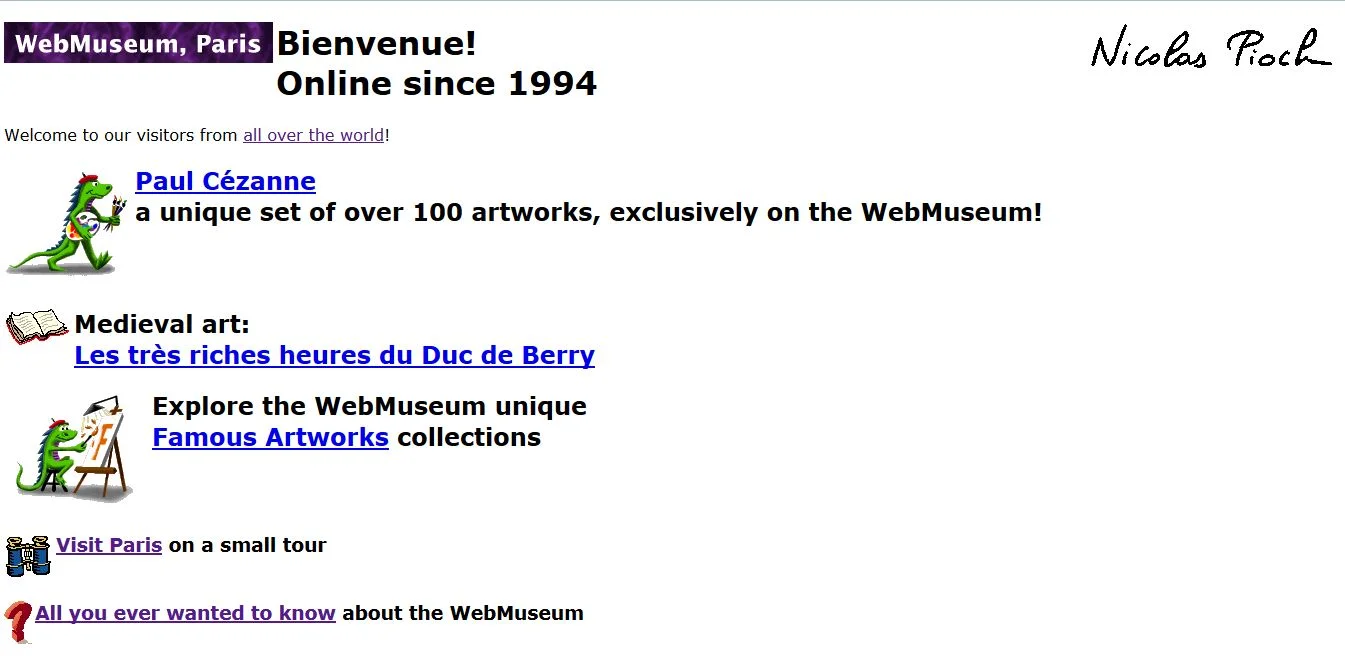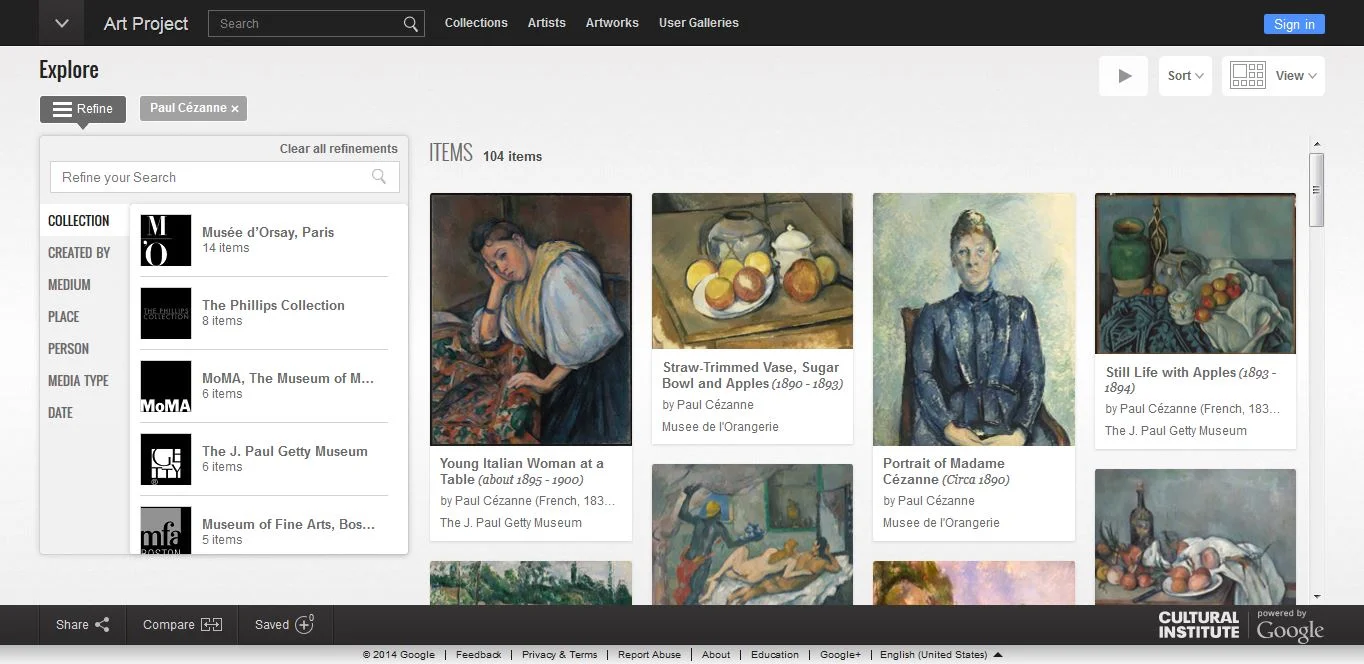One of the first efforts to bring art online started in 1994 when Nicolas Pioch founded the WebMuseum, a database that offers users the ability to browse through images and text about famous (mostly European) artists. Today, the site functions more as a testament of what the Internet used to look like than an art museum, as it was last updated in 2002. However outdated the site may be, the mission remains surprisingly current. “I decided to start working on this exhibit because I felt more artistic stuff was needed on the Internet[i],” the project’s founder nonchalantly states, reminding us of the first days of the web.
WebMuseum’s homepage
In 2013, almost 20 years later, Google announced the launch of the ArtProject, an online platform for art that provides access to thousands of high resolution images and curated content. “Google’s mission is to organize the world’s information and make it universally accessible and useful. The Cultural Institute is an effort to make important cultural material available and accessible to everyone and to digitally preserve it to educate and inspire future generations.[ii]” Although much more articulate, bringing artistic stuff to the Internet still remains at the core of this idea.
Google Art project, showing search results for works by Paul Cézanne
Even when trying to achieve the same goal the contrast of how these two projects look and state their missions is huge, serving to illustrate the evolution of online application design over the last two decades. The ArtProject is a collaboration between Google and numerous cultural institutions, with Google providing an enormous amount of technological resources and human expertise behind the project, The WebMuseum, on the other hand, is reminiscent of an DIY era, “No support, no funding, no manpower: the WebMuseum is a collaborative work of its visitors contributing to expand and improve the WebMuseum.[iii]” It’s interesting to note that the crowdsourcing component remains a constant, even if the ArtProject tackles it in a much more structured, or even curated, way.
Nostalgia (and technological advances) aside, arguments can still be made in favor of both approaches. If a free and powerful tool is available, why spend the money and resources building something from scratch? Or, on the other hand, why limit the narrative possibilities of our online exhibition by using a “cookie cutter” tool? Of course, lots of variations exist between the WebMuseum and exhibitions made with Google ArtProject. If your organization is considering developing an online exhibition, where to fall on that spectrum is answered by considering the objectives you want to reach.
And so begins my exploration of the tradeoffs between developing online exhibitions with pre-made and custom built applications. In the coming months I will provide general guidelines for managers who seek to match their project’s mission with available technological resources, whether doing an online exhibition as a component of a physical installation, or as an independent project that showcases a particular area of the museum’s collection.
In the meantime, I would love to hear your experience on developing web-based exhibitions. Please feel free to email the editor or comment below with any questions or comments.
[i] http://www.ibiblio.org/wm/about/about.html
[ii] http://www.ibiblio.org/wm/about/about.html
[iii] http://www.google.com/culturalinstitute/about/



